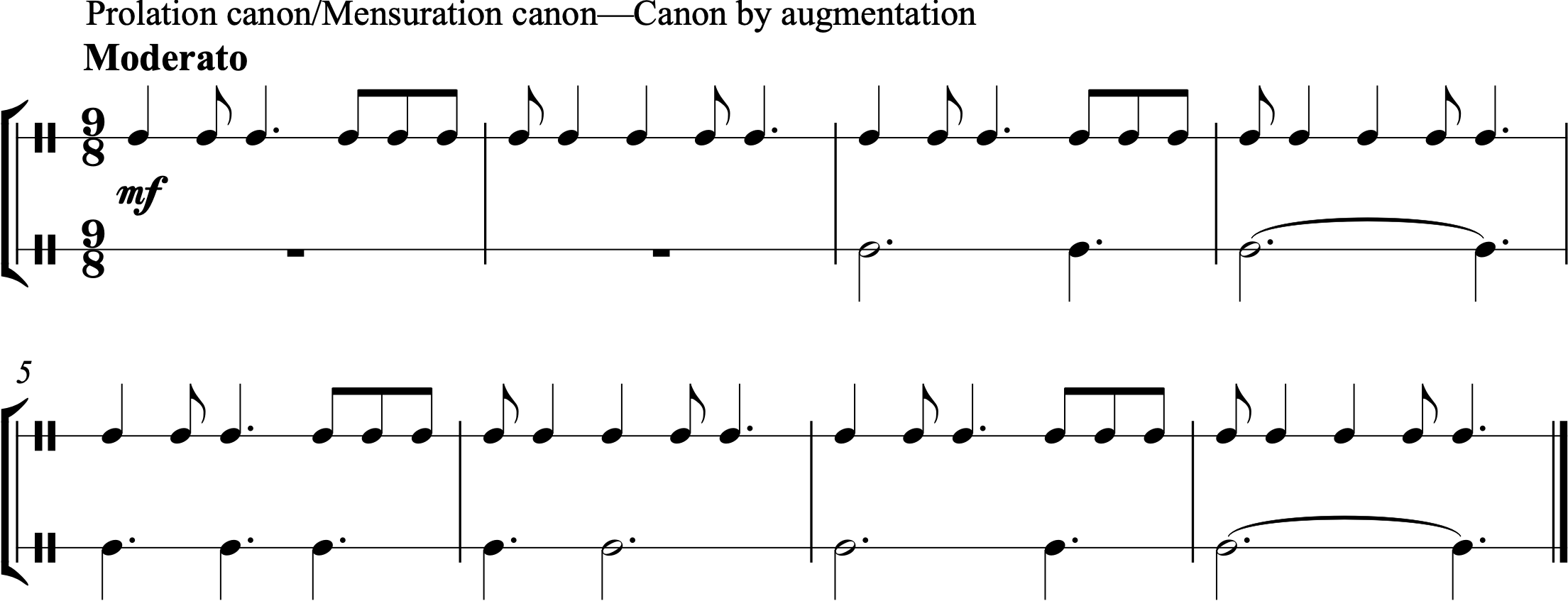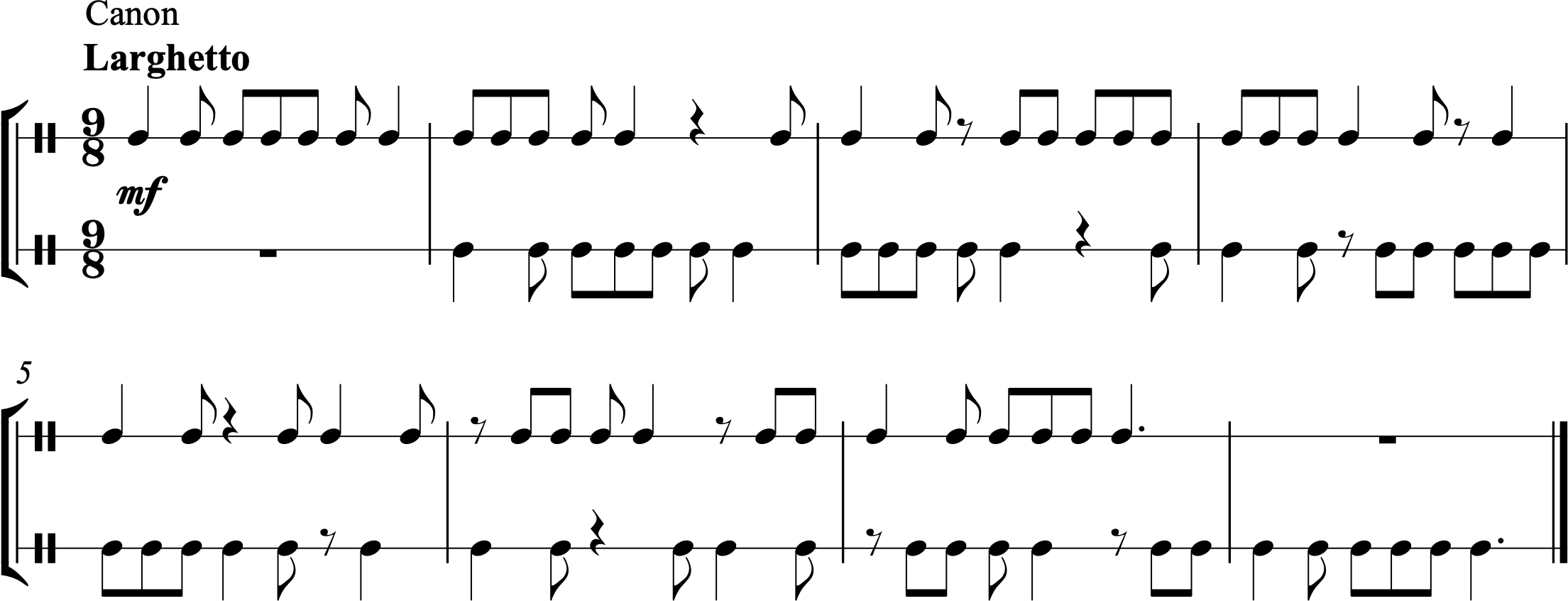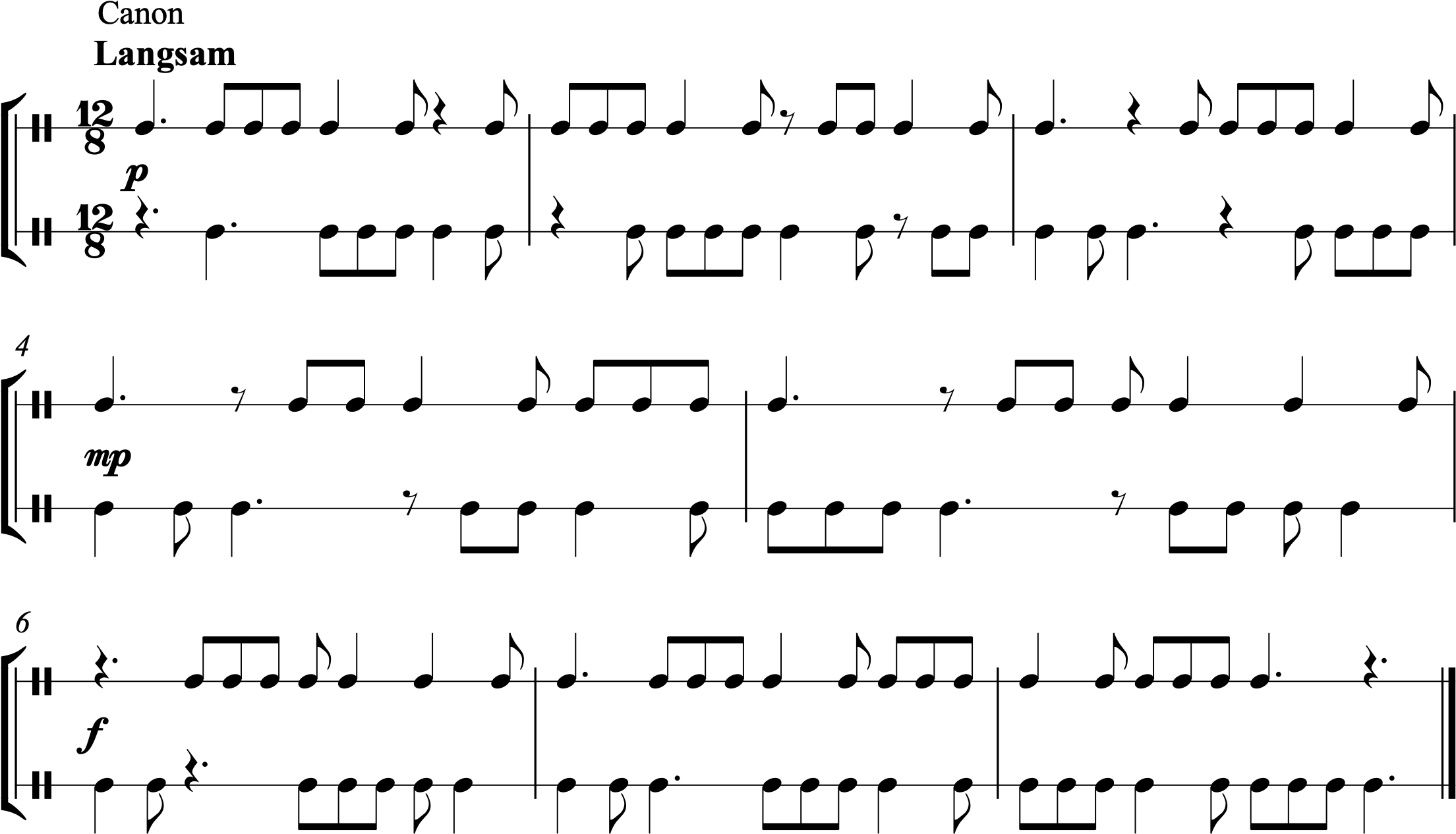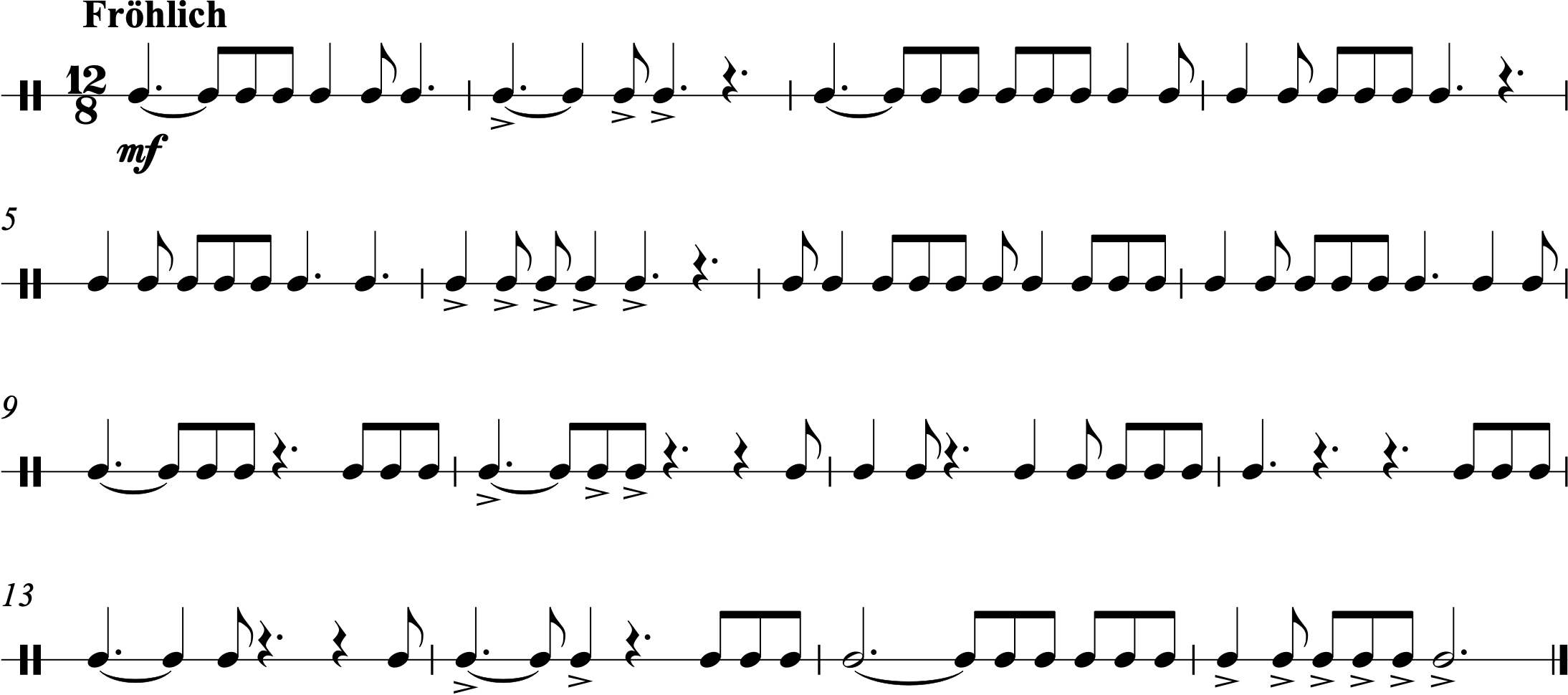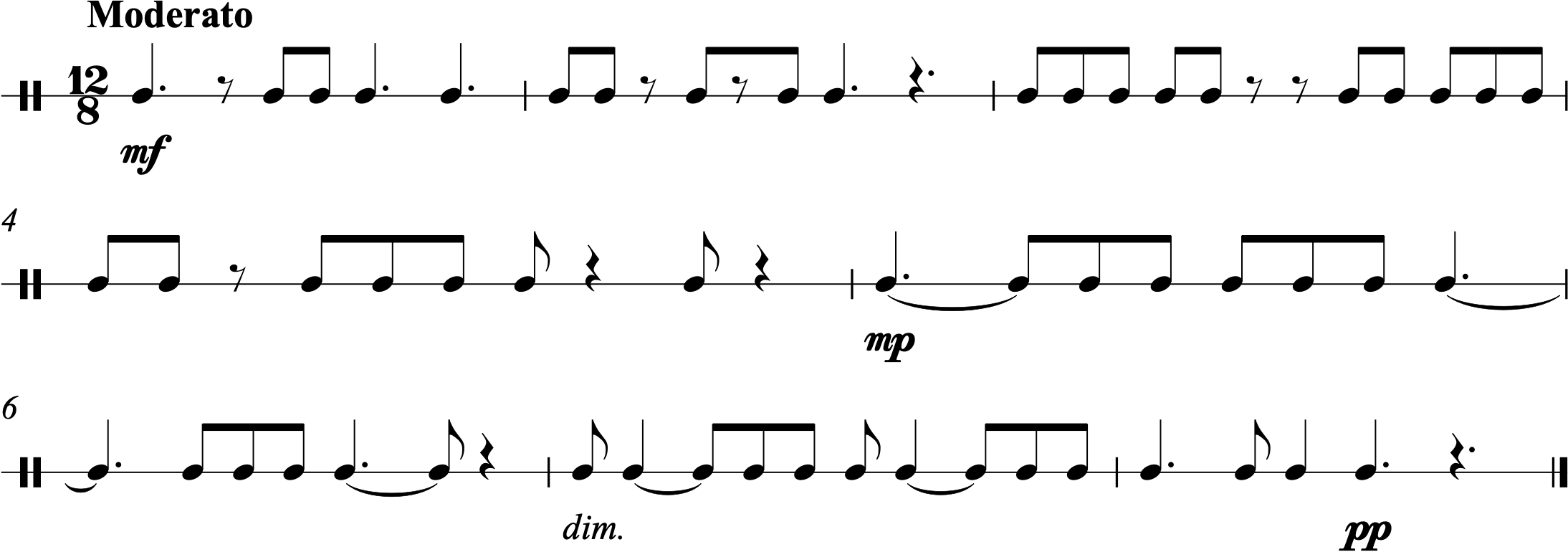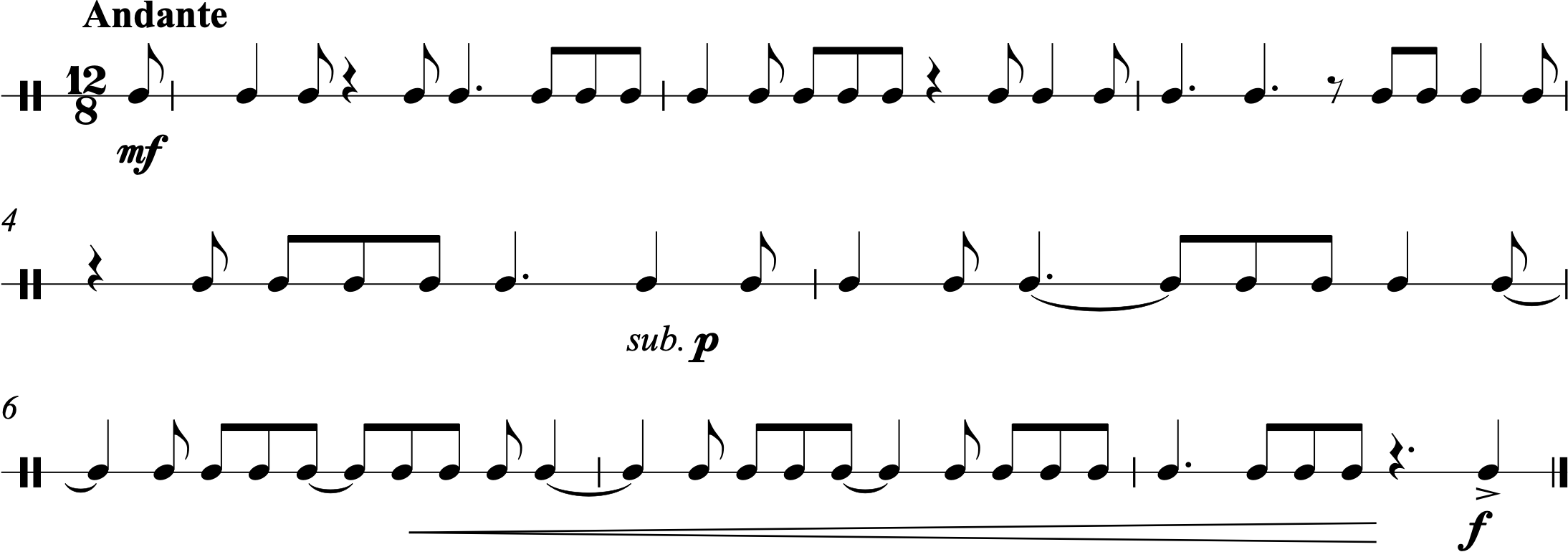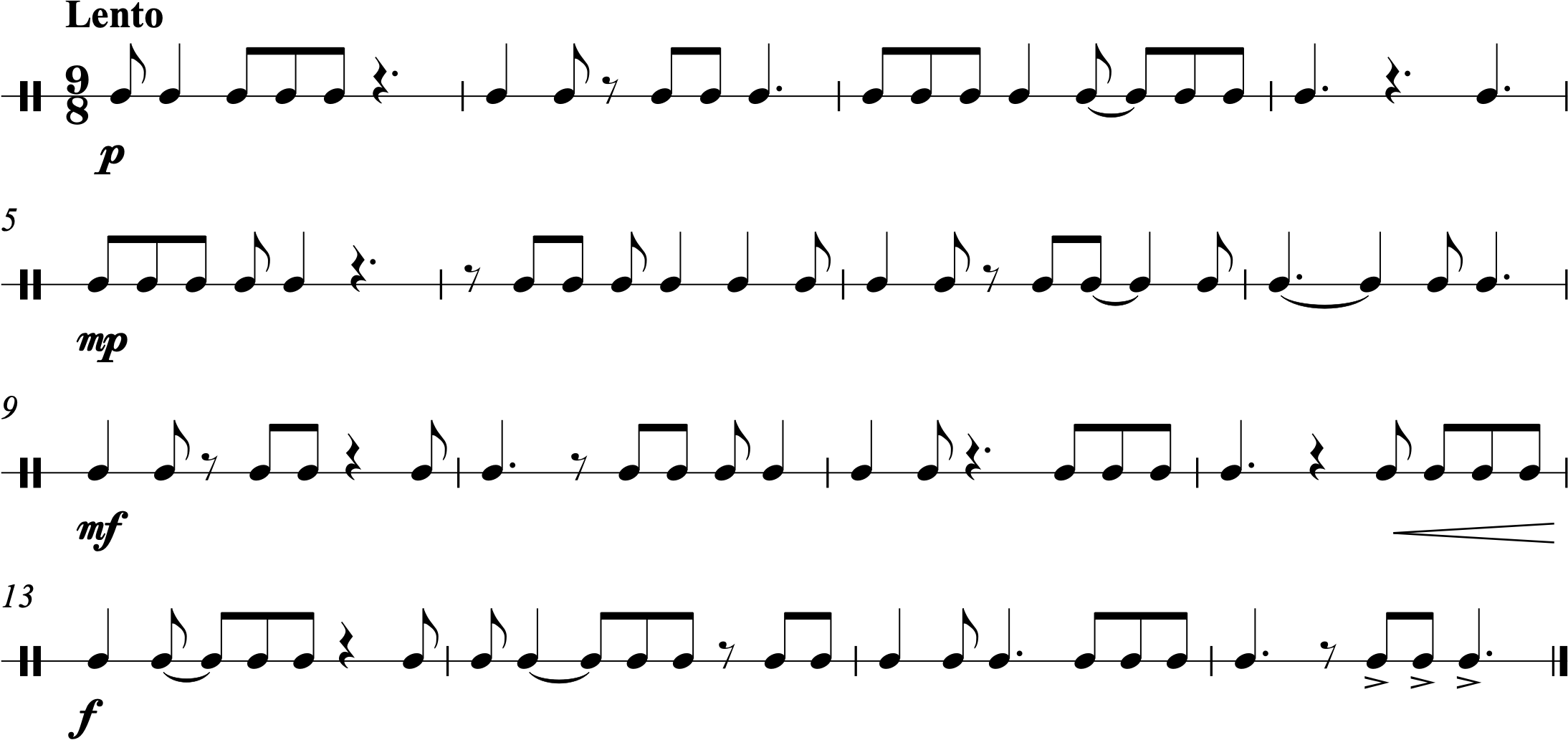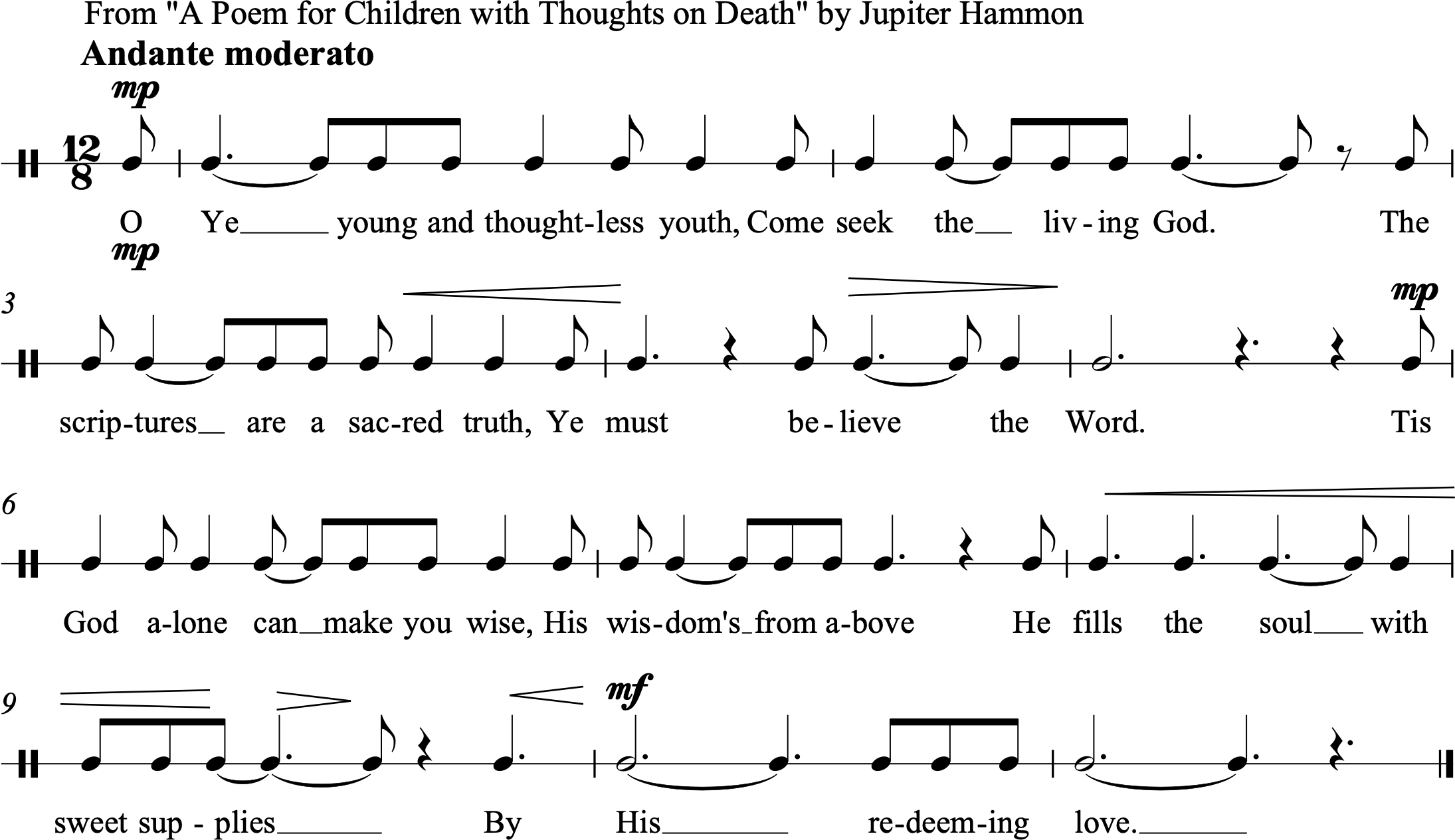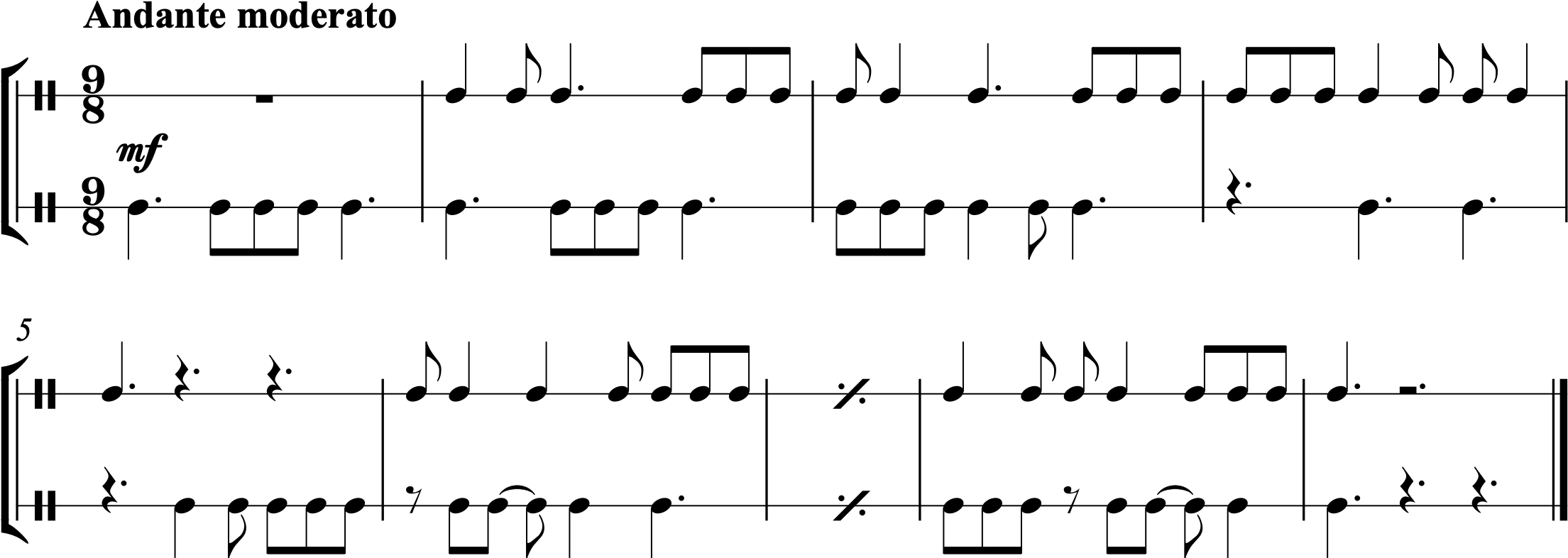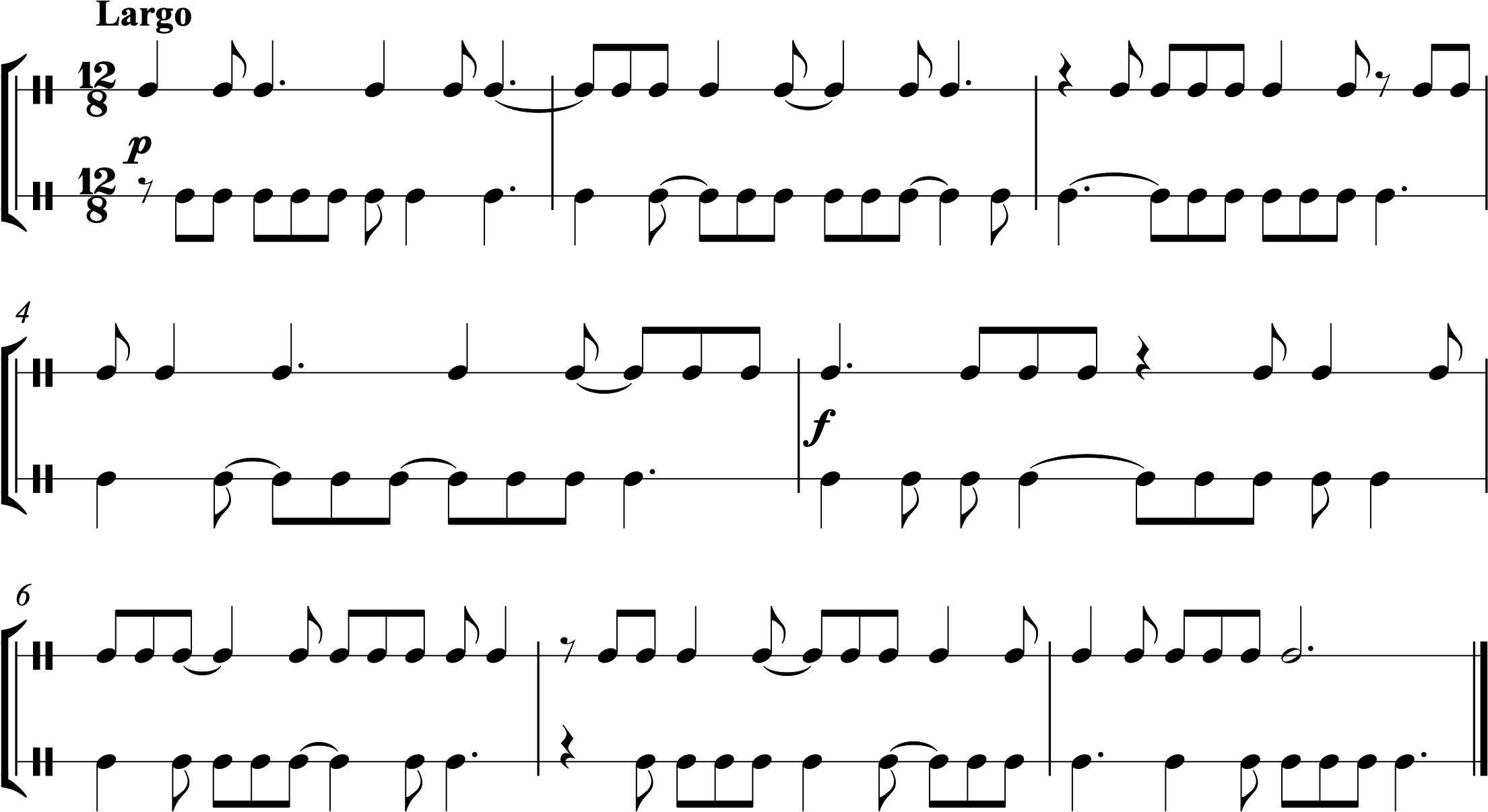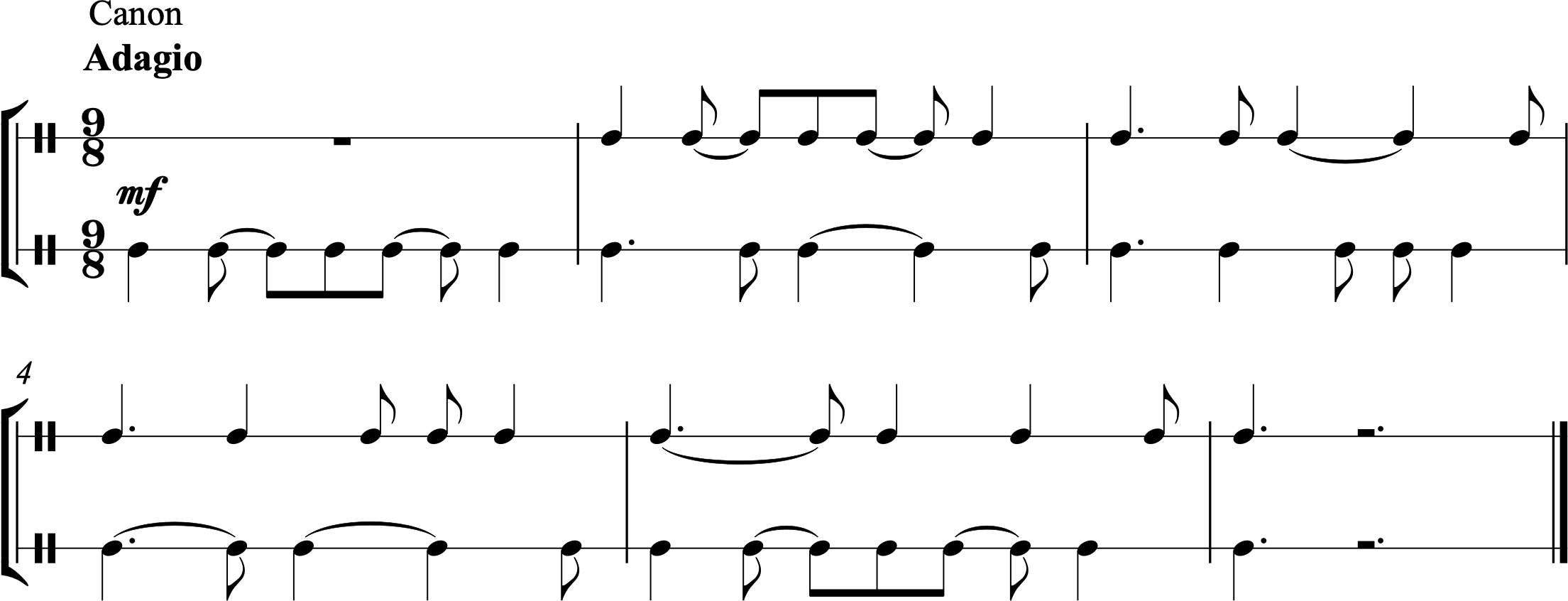Chapter 4: Compound Meter—9/8, 12/8, and ties
About This Chapter
About This Chapter: We first encountered compound meter in Chapter 2, but with a focus on 6/8 (compound duple) only. In this chapter, we’ll see other types of compound meter as well—compound triple (9/8) and compound quadruple (12/8). We’ll also see the ties that were introduced in simple meter in Chapter 3 appear here in compound meter.
Notation can help clarify the meter. Showing the beats clearly makes performing the exercise easier. Take a look at the example below. Measures 2 and 3 sound the same, but measure 2 is the preferred way of notating this rhythm because it shows very clearly that there are four beats in the measure by keeping the rhythms that don’t belong to the same beats separated from one another. In contrast, the second beat is obscured in measure 3 because of the use of the half note. That half note contains all of beat 1 and part of beat 2. It’s harder to see where beat 2 occurs in measure 3 than in measure 2, in which the dotted quarter note tied to an eighth note makes it easy to see—and thus easier to perform.
Section A—Introduction to 9/8
Practice
Practice A:
 Practice by performing along with this audio file, which features a metronome click and the notated rhythm. You will hear one measure of wood block to establish the tempo before the exercise begins.
Practice by performing along with this audio file, which features a metronome click and the notated rhythm. You will hear one measure of wood block to establish the tempo before the exercise begins.
Next, try performing along with this audio file, which features the notated rhythm but no metronome click. You will hear one measure of wood block to establish the tempo before the exercise begins.
1.
2.
3.
4.
5.
6.
7.
8.
Section B—Introduction to 12/8
9.
10.
11.
12.
13.
14.
Section C—Two-part rhythms featuring 9/8 and 12/8
15.
16.
17.
18.
19.
Section D—Ties
Practice
Practice D:
 Practice by performing along with this audio file, which features a metronome click and the notated rhythm. You will hear one full measure of wood block to establish the tempo before the exercise begins.
Practice by performing along with this audio file, which features a metronome click and the notated rhythm. You will hear one full measure of wood block to establish the tempo before the exercise begins.
Next, try performing along with this audio file, which features the notated rhythm but no metronome click. You will hear one full measure of wood block to establish the tempo before the exercise begins.
20.
21.
22.
23.
24.
25.
26.
27.
28.
29.
30.
31.
32.
33.
Section E—Two-part rhythms featuring ties
34.
35.
36.
37.
38.
39.
















